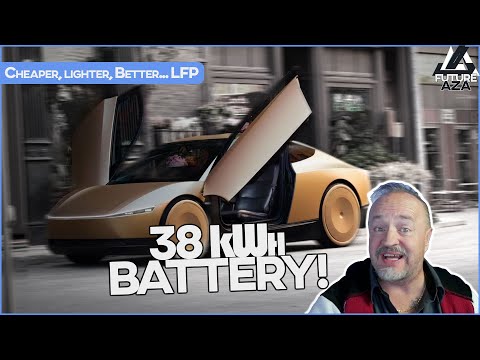The Cybercab is designed to be a lightweight, cost-effective electric vehicle that utilizes advanced battery technology and simplified features to enhance efficiency and reduce overall costs
Questions to inspire discussion
Battery and Efficiency
🔋Q: How does the Cybercab's battery compare to the Model 3?
A: The Cybercab's 38 kWh battery pack is half the size and weight of a 75 kWh Model 3 pack, reducing 500 lbs and enabling a virtuous cycle of cost savings through reduced weight and complexity.
⚡Q: What advantages do LFP batteries offer for the Cybercab?
A: LFP batteries can be charged to 100% without degradation, making them ideal for fleet use and long-term storage, while offering 50% cost savings over traditional batteries.
Design and Cost Savings
🚗Q: How does the Cybercab's design contribute to cost savings?
A: The Cybercab's simplified interior without seat adjustment and frunk, along with quick seat replacement using a few bolts, reduces complexity and cost.
🛞Q: What's unique about the Cybercab's wheel configuration?
A: The Cybercab features front-wheel drive and staggered wheels (18" front, 21" rear), saving 50% on side mirrors and wiring, providing a smoother ride, and reducing wheel costs and pop risk.
Production and Range
🏭Q: How much battery production capacity has Tesla acquired for the Cybercab?
A: Tesla purchased 10 GWatt-hour/year of idle LFP battery production capacity in the US, potentially producing 263,000 38 kWh packs annually.
Key Insights
Battery Innovation
🔋Tesla's Cybercab features a 38 kWh battery pack that's half the size and weight of a 75 kWh Model 3 pack, shedding 500 lbs and enabling a virtuous cycle of cost savings through reduced weight and complexity.
🏭Tesla acquired 10 GWh/year of idle LFP battery production capacity in the US, potentially producing 263,000 38 kWh packs annually, leveraging cheaper LFP chemistry for 50% cost savings over traditional batteries.
Design Efficiency
🚗Cybercab's front-wheel drive and staggered wheels (18" front, 21" rear) will save 50% on side mirrors, wiring, and installation, while providing a smoother ride and reducing wheel costs.
Fleet Optimization
🔌LFP batteries in Cybercab can be charged to 100% without degradation, making them ideal for fleet use and long-term storage without the need to stop at 80% charge.
🛞Cybercab's smaller wheels with fatter tires offer more range and lower costs, making them a logical choice for fleet vehicles like taxis.
#FutureAzA #Tesla #Cybercab
XMentions: @FutureAzA @HabitatsDigital
Clips
-
00:00 ⚡ A 38 kWh battery pack for the Cybercab promises to be lightweight, efficient, and cost-effective, significantly reducing the vehicle's overall weight.
-
01:38 🔋 Tesla's new battery production in the US will focus on lightweight, cost-effective LFP batteries, enabling full charging without degradation and significantly reducing costs.
-
02:54 🚗 Cybercab's battery will be lightweight, affordable, and likely utilize LFP technology, enhancing efficiency and ride comfort with smaller, cheaper wheels.
-
04:27 🚗 Cybercab will likely feature front-wheel drive, eliminating the need for all-wheel drive and traditional mirrors for a more efficient design.
-
05:39 💰 Significant cost savings in city taxi design come from eliminating unnecessary equipment and reducing installation complexities.
-
06:24 🚗 Cybertruck prototypes often differ significantly from final production models, showcasing exaggerated features that may not make it to the consumer version.
-
07:53 🚗 The Cybercab will feature lightweight plastic panels for cost efficiency, reinforced with steel for safety and functionality.
- The Cybercab's exterior panels are likely made of plastic rather than stainless steel or carbon fiber due to weight and cost considerations.
- The use of lightweight, cheap plastic in vehicle construction can be made safe by incorporating structural elements like steel pipes, minimizing wiring and maintaining functionality.
- 09:43 💡 Eliminating unnecessary features in cybercabs leads to significant cost savings and simplifies maintenance.
-------------------------------------
Duration: 0:11:0
Publication Date: 2024-10-16T15:12:23Z
WatchUrl:https://www.youtube.com/watch?v=fyWlNAT6SP0
-------------------------------------

